Bolivian holidays: Diablada
Categories: Culture | Holidays and Festivals | Nations
By Pictolic https://pictolic.com/article/bolivian-holidays-diablada.htmlDiablada — traditional Bolivian carnival, which is under protection of UNESCO as "the oral-visual heritage of mankind". The carnival is also known for the traditional South American dance which was created in Andean Altipano, characterized by the mask and devil costume worn by dancers.
Maria Plotnikova writes: Actually, this carnival was the main reason for my trip to Bolivia. In carnival traditions Diablada closely intertwined pagan and Christian rituals. Long ago a mythical Indian demigod Wari (Wari) did not like the behavior subject to him of the people of Uru-Uru, and he decided to send to earth a giant ants, a snake, a crocodile, a frog and a Condor. The creature slowly crept in settlement of delinquent Indians (now the city of Oruro, the capital of carnival), and suddenly intervened in the case of the virgin Mary. The power given to her from above, she stopped the monsters, turning them into sand hills (and still can be seen around the city). And since Oruro is a mining town, and the Savior began to be called Maria de Socavon (Mary miner). On the site of her miraculous appearance, the residents built a Church, which became the final destination of the carnival procession. And the carnival symbolizes the gratitude to the virgin who saved Uru-Uru from imminent death. In 2011, the official opening of the carnival was March 5, but the carnival celebrations in Oruro lasted for several weeks.
(54 photos)
Of course, the appearance of the carnival can explain the more mundane tales, as in the mines of Oruro at the time, and the gold was driven, and Negros, of which good Spaniards stacks were brought to the Altiplano, could not endure the severe conditions of high mountains, thousands dying during the execution of their duties. Thus, the indigenous population, i.e. Indians, was the only usable labor force. And so, the Spaniards who had only the physical subjugation of the Indians, decided to weave in their heads and their religion. The fact that the deity of Athens, though it was a negative character in the mythology of the Uru-Uru, still not much up to the evil of the devil. The Indians naively thought that the damn Spanish the devil is not so bad, but in fact it depends on the luck of the miners in the extraction of minerals. To this day the devil, whom the Indians cordially called El Tio (from the Spanish "uncle"), is the patron Saint of the Bolivian miners, and his sculptures can be found in many corners of the mines. The Spaniards fought, fought, and inspired the same Bolivians, Mary steeper and ultimately you have to pray to her, not the devil. But since the devil gives a mineral, then its image will be good for carnival, which, as we know from medieval European traditions, the opposite is true – bad becomes good, the servant may be equal to communicate with the host through a mask, etc. (see the work of Bakhtin). So now in Bolivia with my own eyes, you can see echoes of the medieval tradition of carnival, stunted in Europe in some sort of shaggy centuries. But Bolivians do sincerely believe in all those miracles and legends, carnival and a dance for them is purification from sins. In short, in UNESCO are not fools to proclaim "the oral-visual heritage of mankind" by some carnavalesco like a Brazilian. It is we, the dark, only hear Rio Rio, Tits and ass, and the Earth over what is happening.
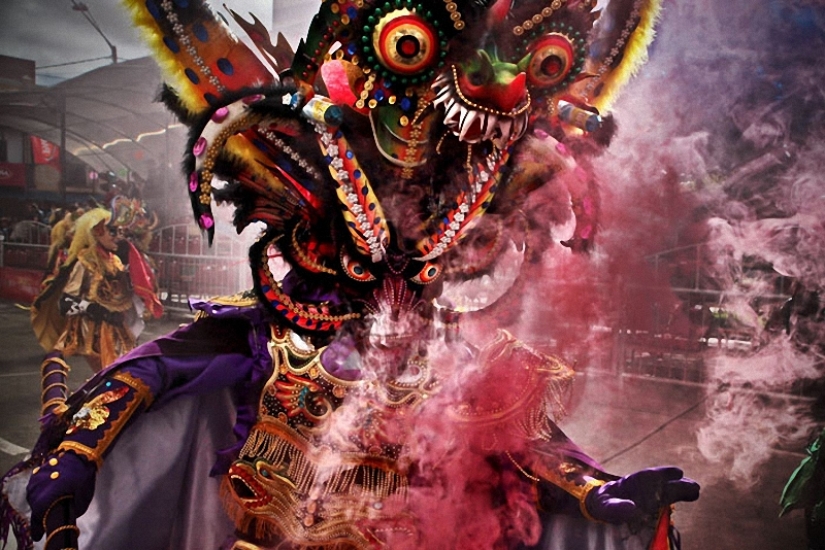 1.
1.
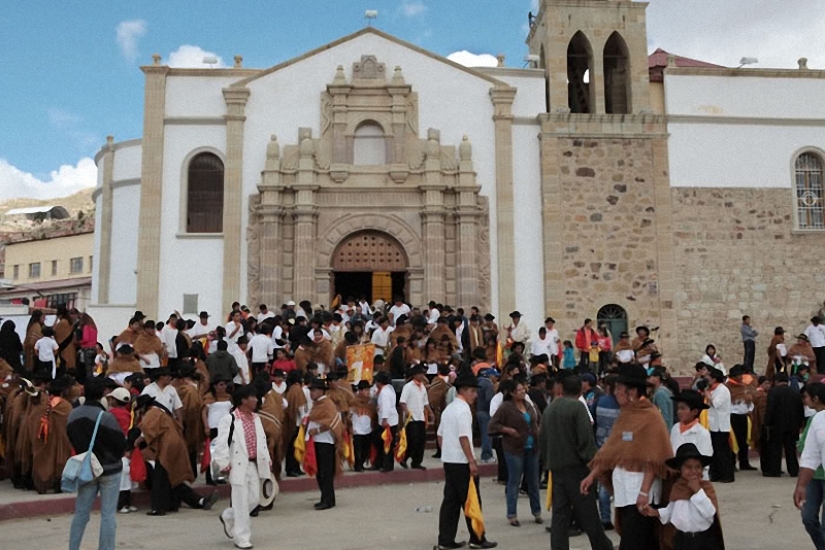 2. A week before the opening Diablada all the carnival participants go to the Church of Maria de Socavon and bring a solemn vow to dance in the next three years.
2. A week before the opening Diablada all the carnival participants go to the Church of Maria de Socavon and bring a solemn vow to dance in the next three years.
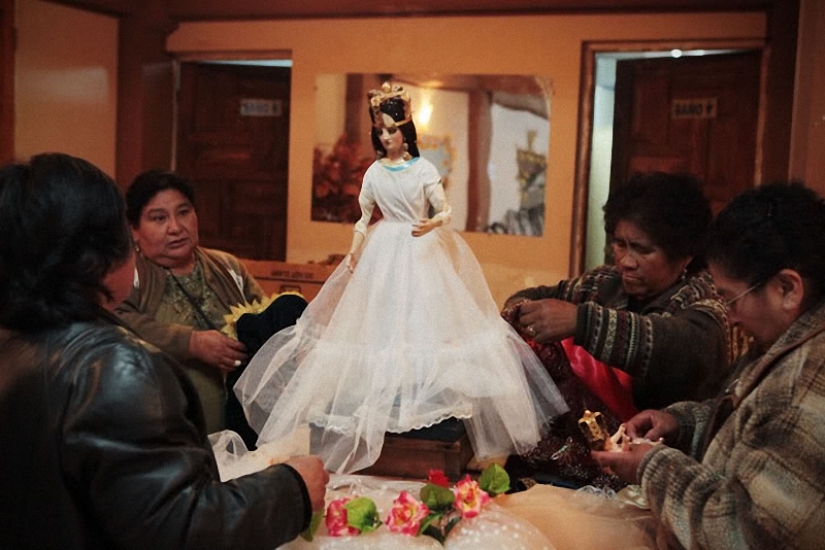 3. Friday (the eve of the carnival) is a very important ritual of dressing the virgin Mary in the new clothes that she will wear the entire year. Also the ritual of fumigation carnival costume and masks of the devil. Specially selected "intermediaries" grandly-nobly expose Mary to underwear.
3. Friday (the eve of the carnival) is a very important ritual of dressing the virgin Mary in the new clothes that she will wear the entire year. Also the ritual of fumigation carnival costume and masks of the devil. Specially selected "intermediaries" grandly-nobly expose Mary to underwear.
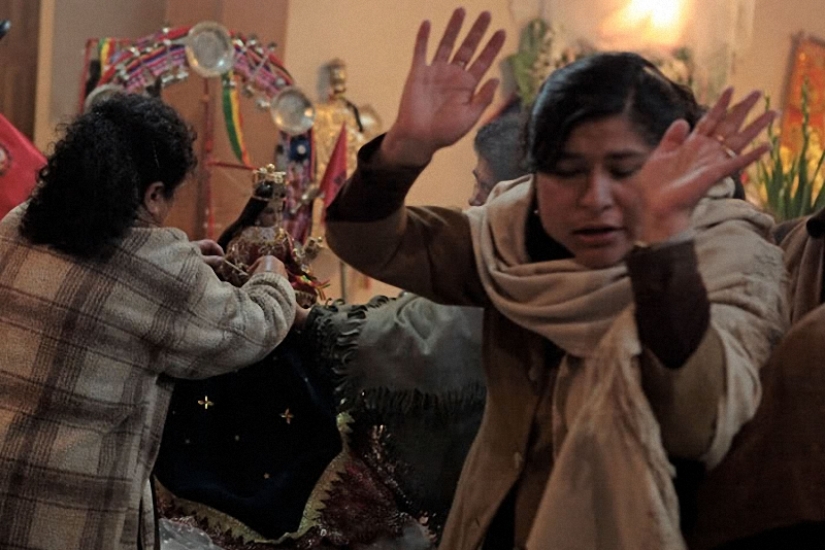 4. After a change of clothing spoken various prayers and spells.
4. After a change of clothing spoken various prayers and spells.
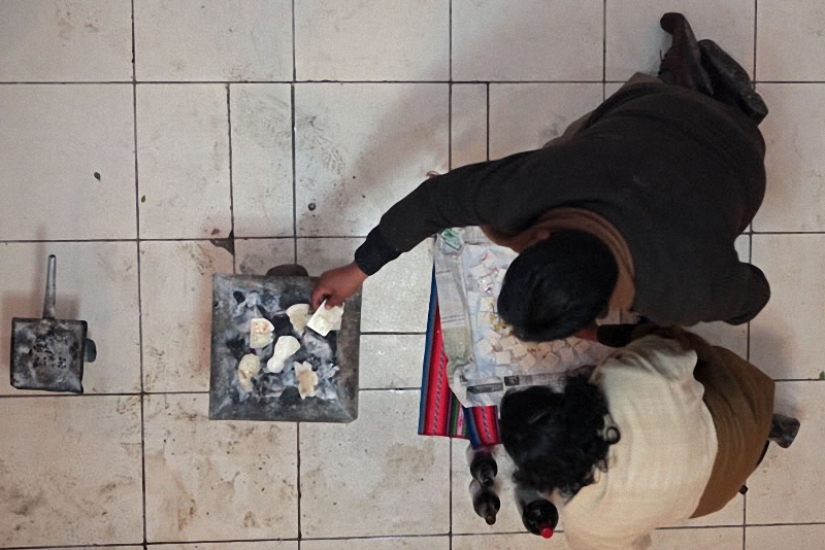 5. Intermediaries perform complicated rituals of native American burning .
5. Intermediaries perform complicated rituals of native American burning .
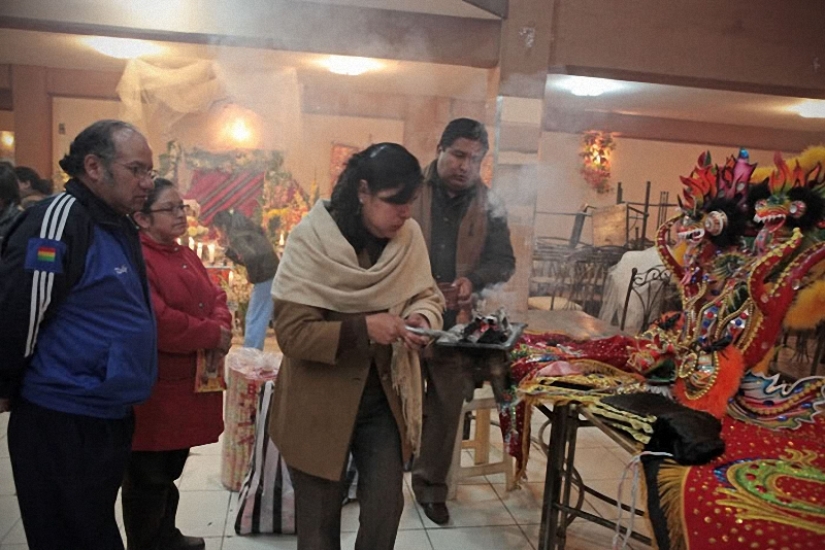 6. Then they fumigate carnival costume.
6. Then they fumigate carnival costume.
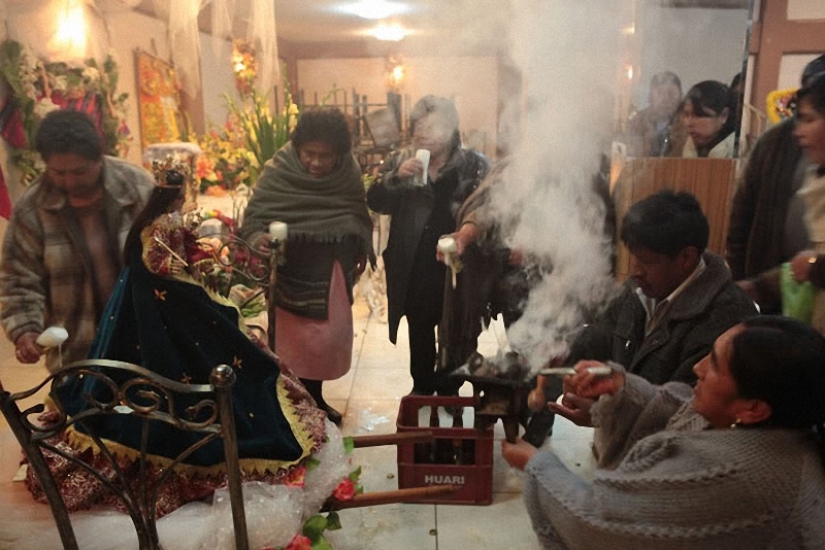 7. After the official part is lifted the first crate of beer. Before your first SIP, all are obliged to spill a little drink on the floor, thereby thanking the Pachamama (mother Earth); Maria also gets his portion of beer.
7. After the official part is lifted the first crate of beer. Before your first SIP, all are obliged to spill a little drink on the floor, thereby thanking the Pachamama (mother Earth); Maria also gets his portion of beer.
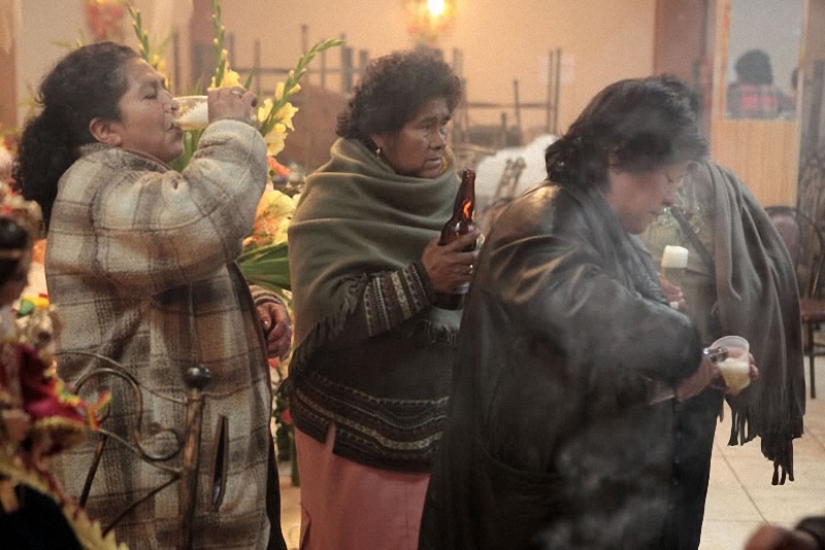 8. Then pulled the second, third, etc. a crate of beer and starts drinking-spree. I remember at three a.m. I was literally brought home good mediators. Probably inspired my name :).
8. Then pulled the second, third, etc. a crate of beer and starts drinking-spree. I remember at three a.m. I was literally brought home good mediators. Probably inspired my name :).
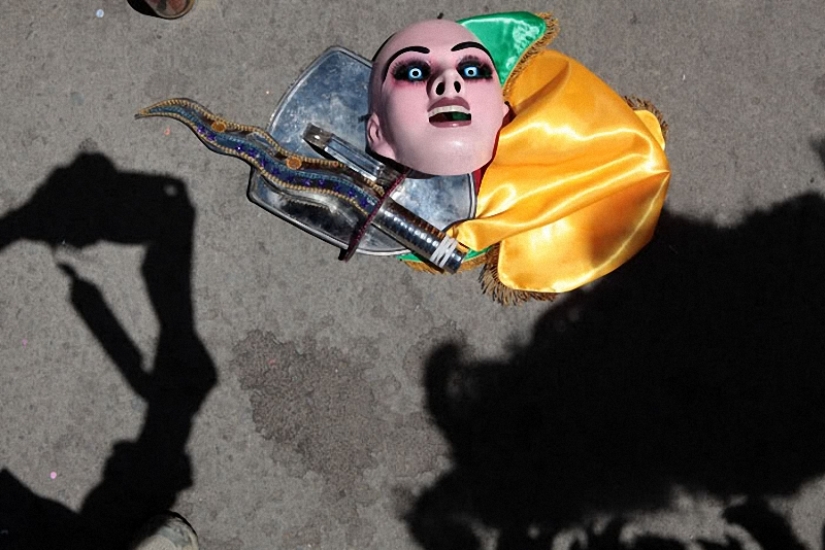 9. The carnival starts at 8 am. Mask of the Archangel lying on the pavement before the first performances of the dance group.
9. The carnival starts at 8 am. Mask of the Archangel lying on the pavement before the first performances of the dance group.
 10. Some of the participants after a heavy night late to the beginning of the carnival. Lucifer hastily adjusts his mask devil.
10. Some of the participants after a heavy night late to the beginning of the carnival. Lucifer hastily adjusts his mask devil.
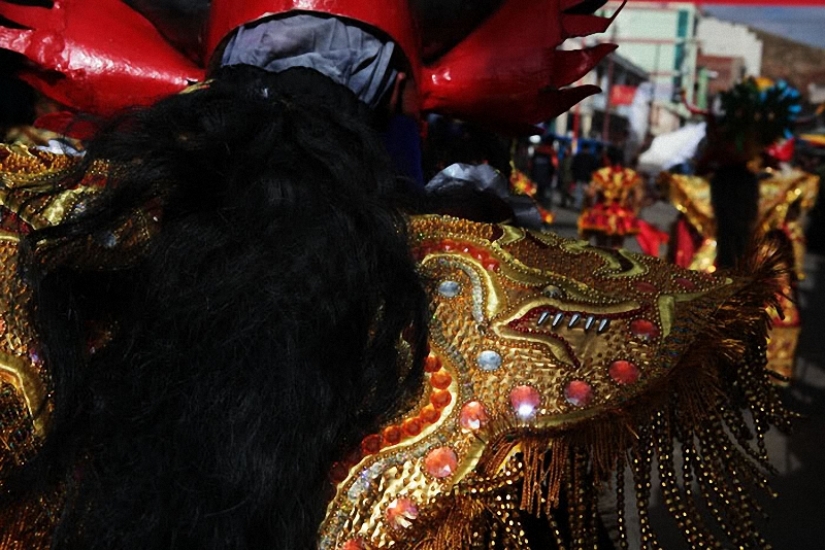 11. Early costumes were decorated with glass and metal, and now Chinese plastic. But they weigh much less.
11. Early costumes were decorated with glass and metal, and now Chinese plastic. But they weigh much less.
 12. The audience early in the morning took place in the stands.
12. The audience early in the morning took place in the stands.
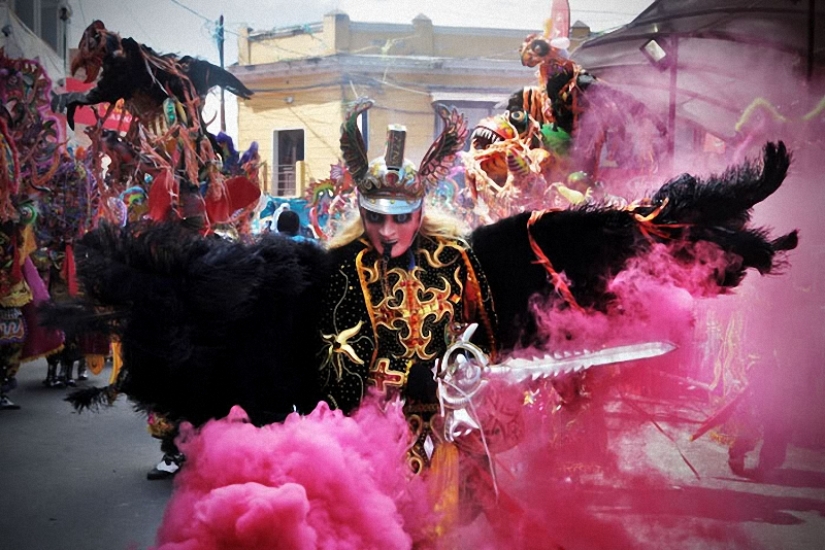 13. The Archangel Michael is dancing in the head of a group of devils.
13. The Archangel Michael is dancing in the head of a group of devils.
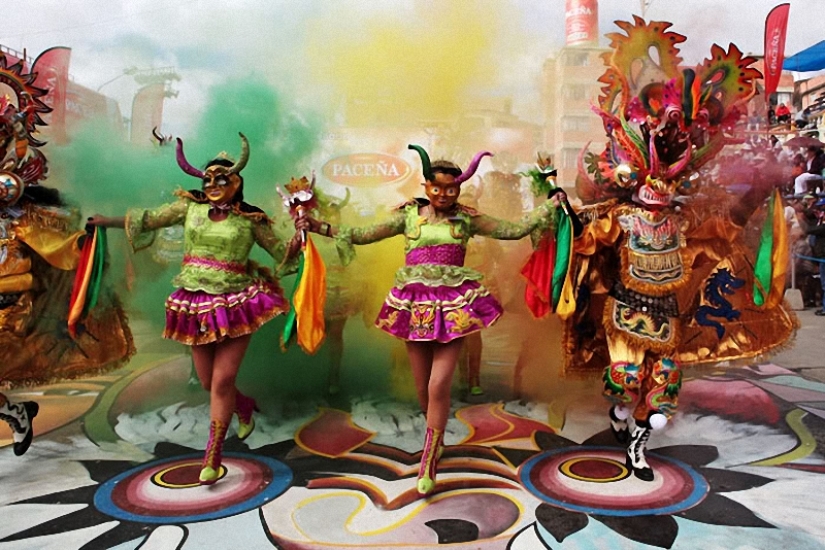 14. The devil appeared in the dance groups only in the second half of the twentieth century (but first in the women's costumes are still danced by men).
14. The devil appeared in the dance groups only in the second half of the twentieth century (but first in the women's costumes are still danced by men).
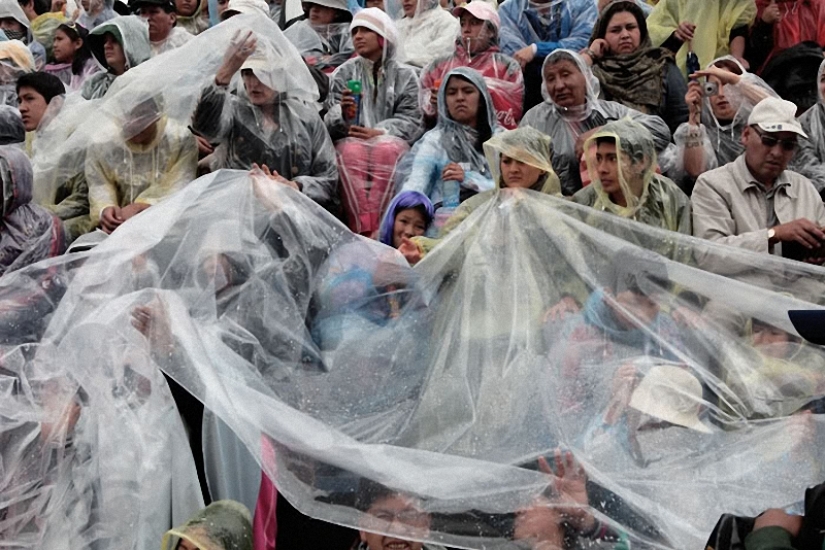 15. Bolivian highland summer is a rain, the temperature 10-15 degrees and biting wind.
15. Bolivian highland summer is a rain, the temperature 10-15 degrees and biting wind.
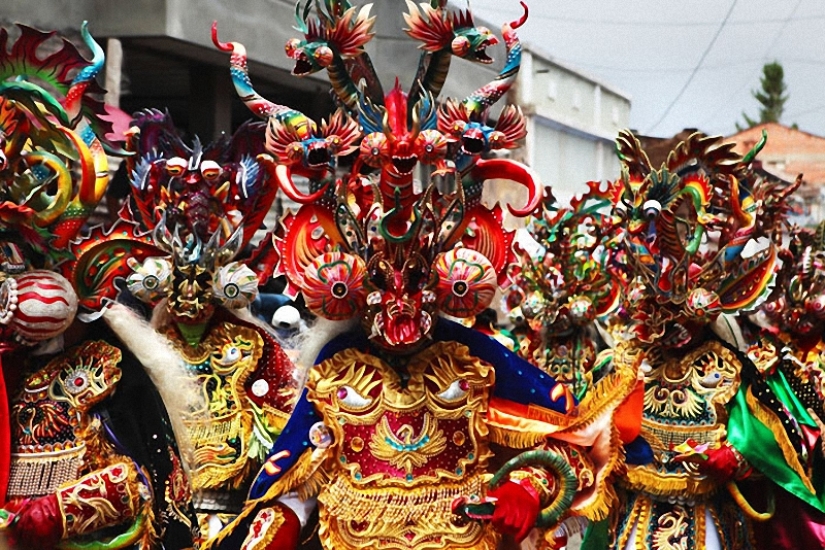 16. The devils mask is a deeply individual in its design.
16. The devils mask is a deeply individual in its design.
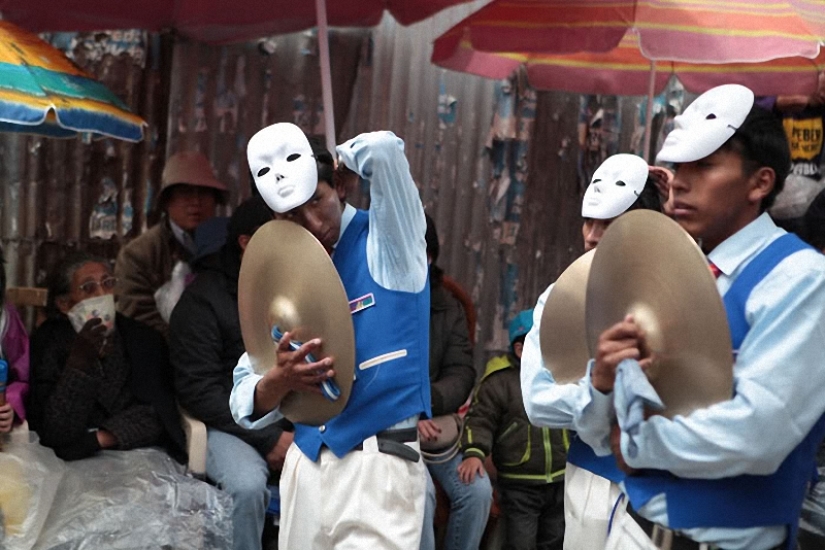 17. Each dance group is accompanied by a hired orchestra.
17. Each dance group is accompanied by a hired orchestra.
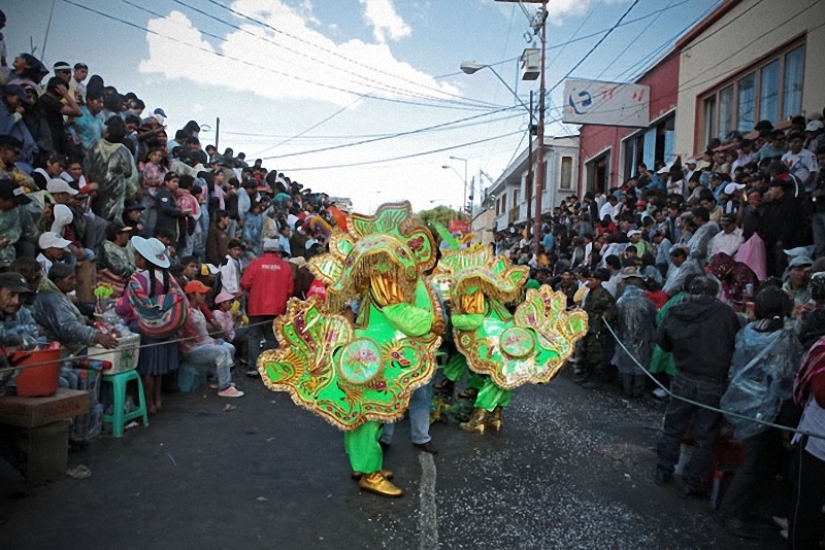 18. In these fun costumes are the carnival group called "morenada" (from Spanish moreno — "dark"). Their dances and robes symbolize the heavy share that has fallen on the shoulders of African slaves based colonizers from all over Africa to work in the highland mines of Bolivia .
18. In these fun costumes are the carnival group called "morenada" (from Spanish moreno — "dark"). Their dances and robes symbolize the heavy share that has fallen on the shoulders of African slaves based colonizers from all over Africa to work in the highland mines of Bolivia .
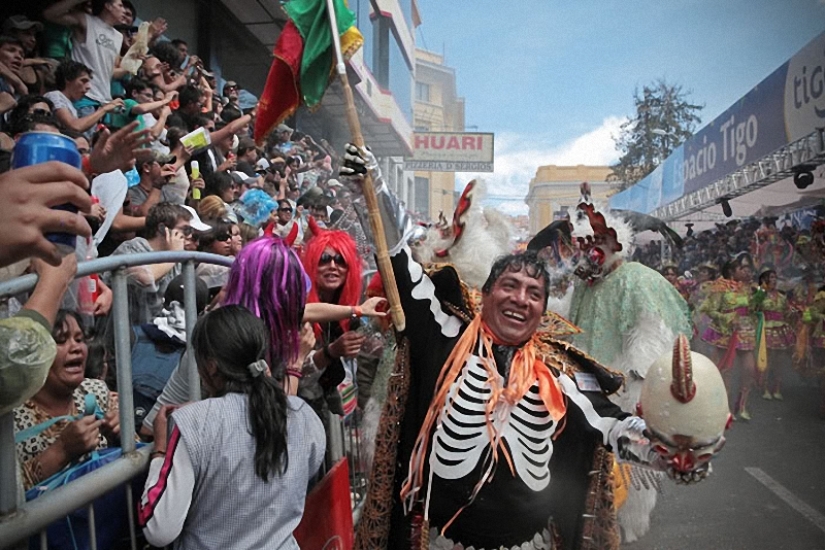 19. Dancer in the costume of Death works for the audience.
19. Dancer in the costume of Death works for the audience.
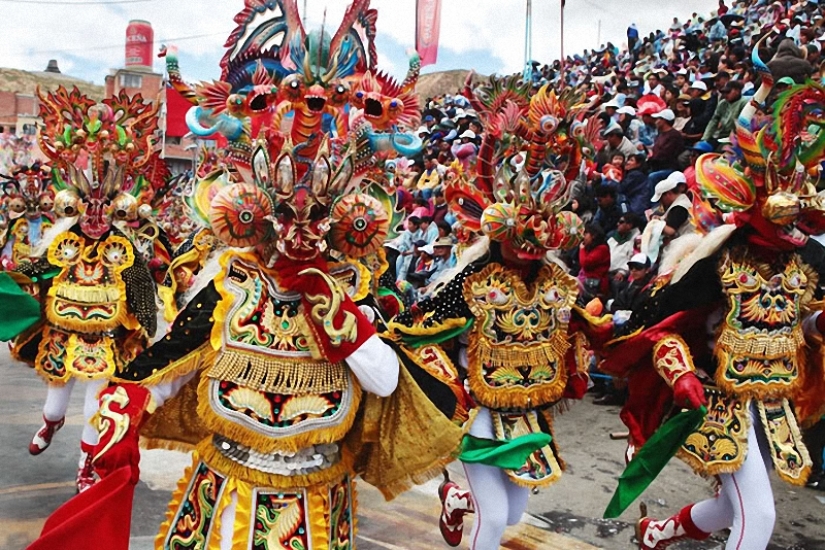 20. Some masks are so heavy and uncomfortable that they have to maintain during the dance.
20. Some masks are so heavy and uncomfortable that they have to maintain during the dance.
 21. During the passage of the women's dance groups the audience at the top of his lungs yell "Beso! Beso!" ("kiss, kiss!"), sometimes the girls blow a kiss, but not all.
21. During the passage of the women's dance groups the audience at the top of his lungs yell "Beso! Beso!" ("kiss, kiss!"), sometimes the girls blow a kiss, but not all.
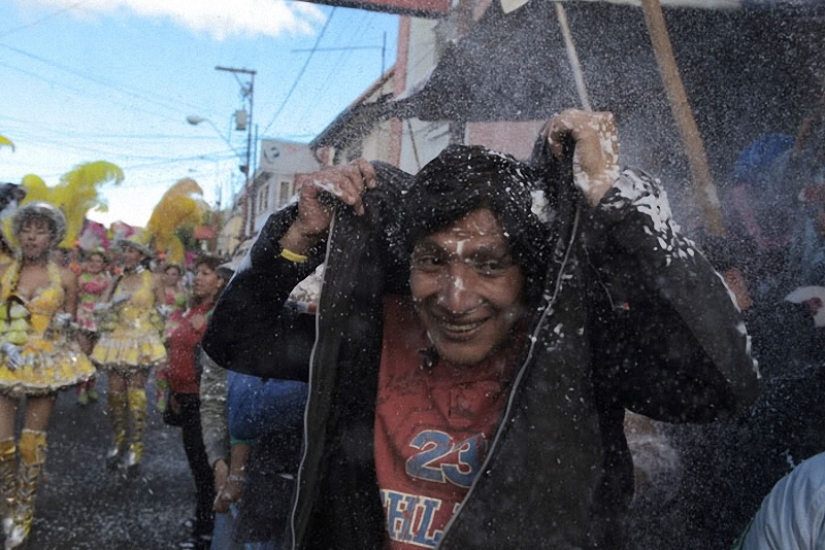 22. Passers-by are subjected to severe foam attack.
22. Passers-by are subjected to severe foam attack.
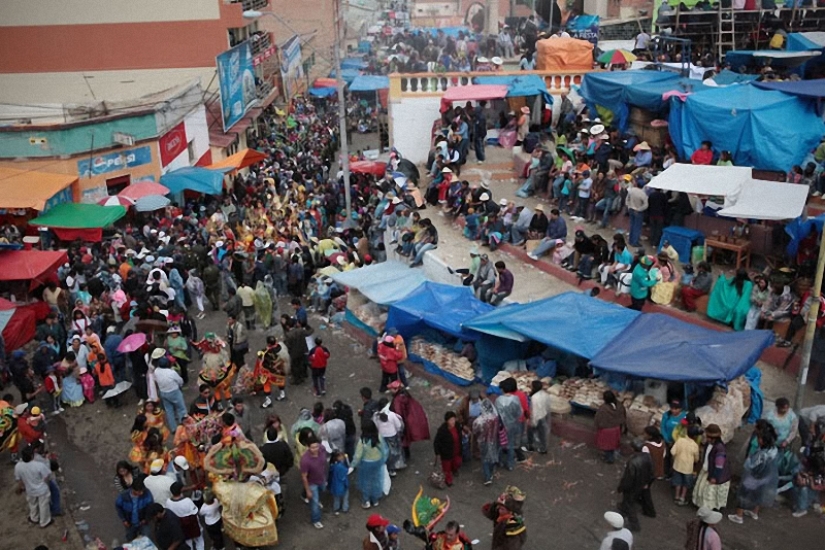 23. The audience placed on all available areas.
23. The audience placed on all available areas.
 24.
24.
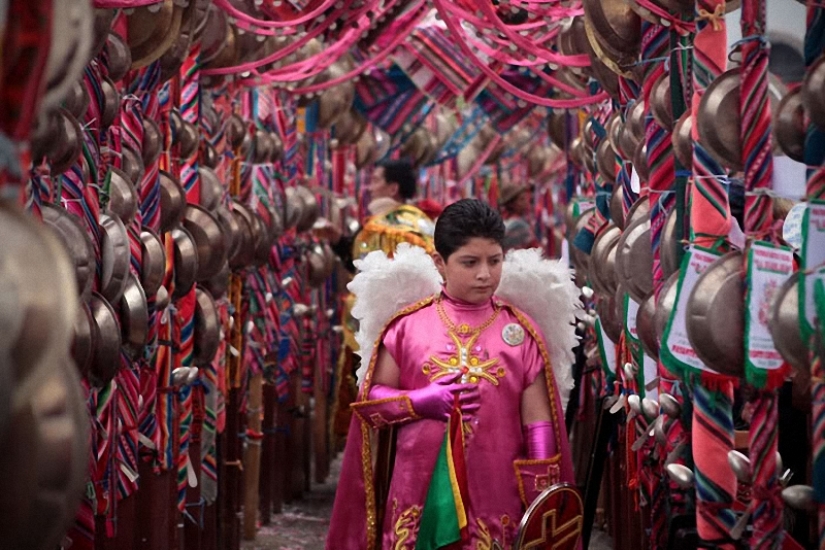 25. A boy stands in a special corridor, a passage through which wash away sins.
25. A boy stands in a special corridor, a passage through which wash away sins.
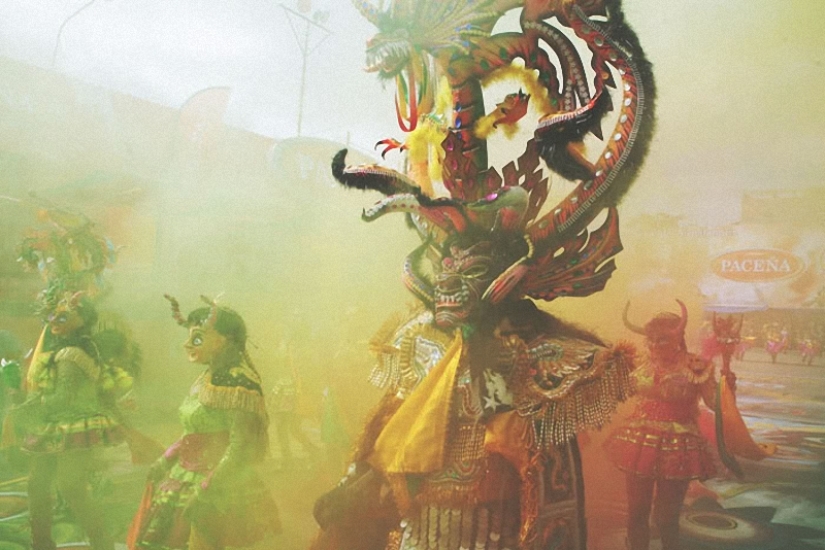 26. The devil's mask with a snake — one of the main characters Diablada.
26. The devil's mask with a snake — one of the main characters Diablada.
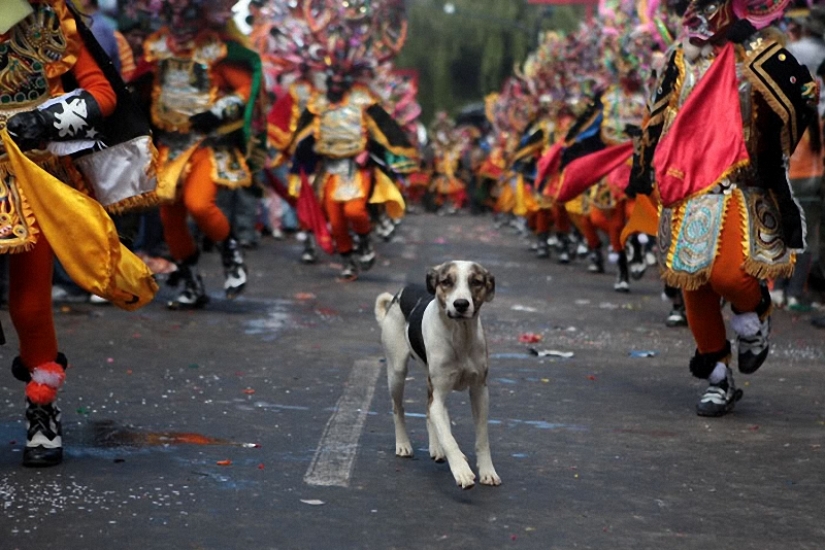 27.
27.
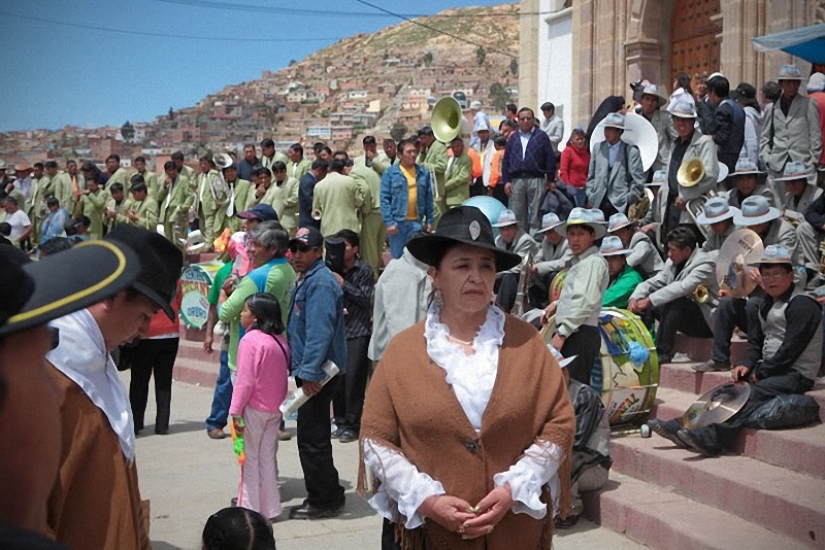 28.
28.
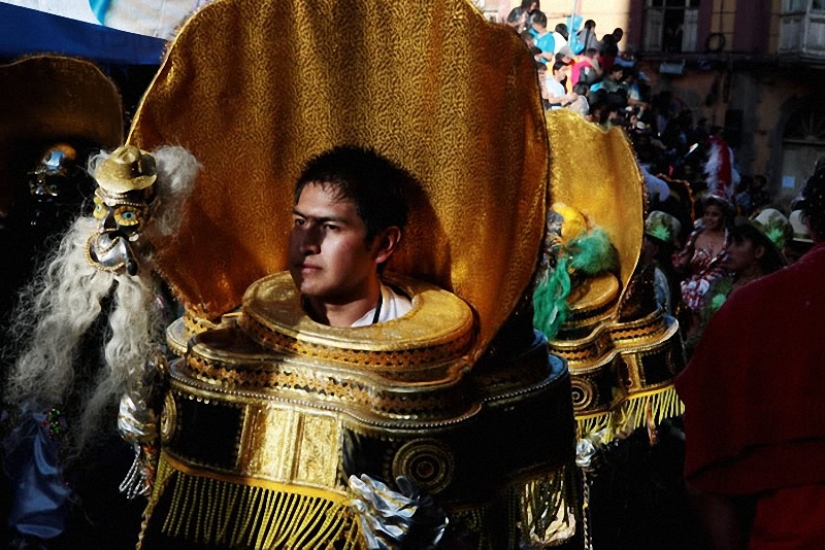 29. The procession lasts for two days — Saturday and Sunday. Saturday (opening Diablada) is the most important day, but on Sunday you can walk without a mask on.
29. The procession lasts for two days — Saturday and Sunday. Saturday (opening Diablada) is the most important day, but on Sunday you can walk without a mask on.
 30. The bear — Grand carnival ringleader.
30. The bear — Grand carnival ringleader.
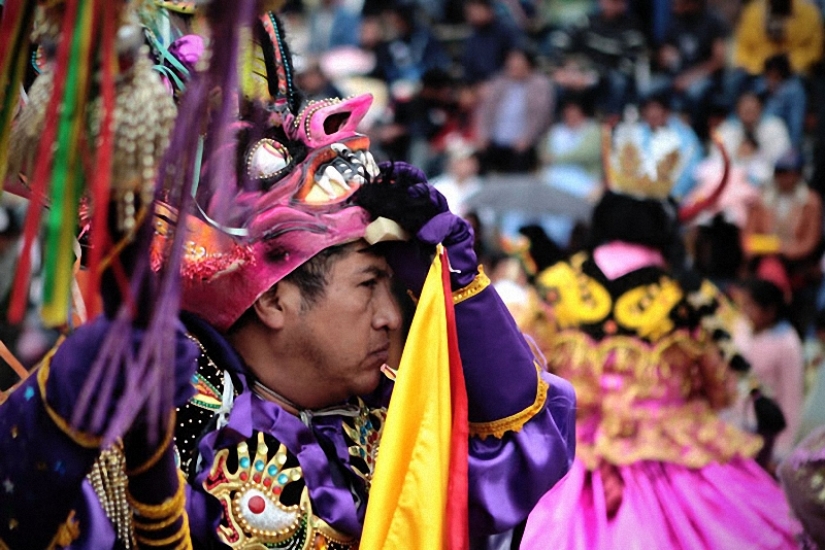 31. In short moments of rest dancers prefer to remove the mask.
31. In short moments of rest dancers prefer to remove the mask.
 32. Party of the carnival on the performance, symbolizing the struggle with mortal sins.
32. Party of the carnival on the performance, symbolizing the struggle with mortal sins.
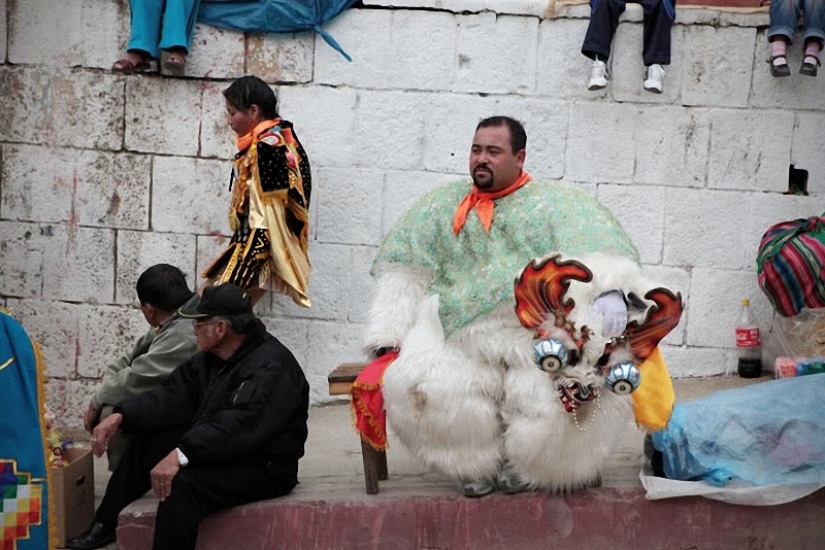 33. Bear (Hakumai) — one of the heroes of Indian mythology. Dancers dressed as bears entertain the audience, joking and clowning around during carnival processions.
33. Bear (Hakumai) — one of the heroes of Indian mythology. Dancers dressed as bears entertain the audience, joking and clowning around during carnival processions.
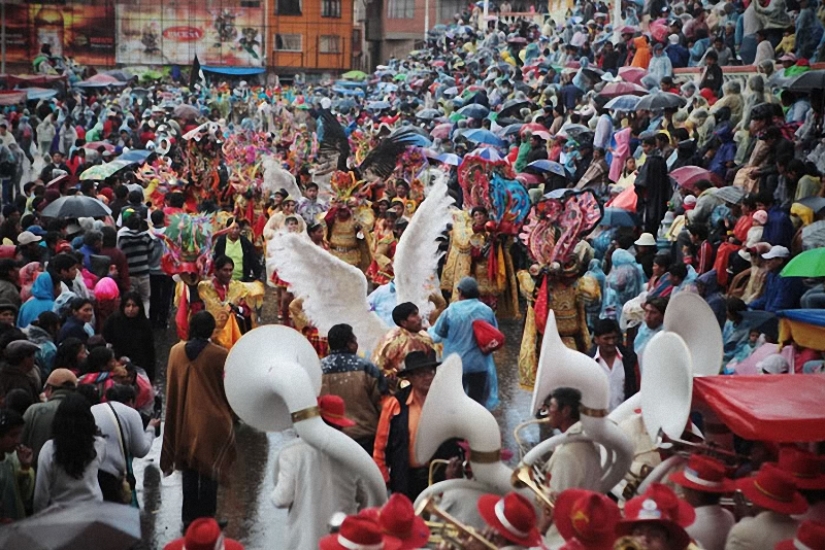 34. Despite the rain, the audience did not disperse until late at night.
34. Despite the rain, the audience did not disperse until late at night.
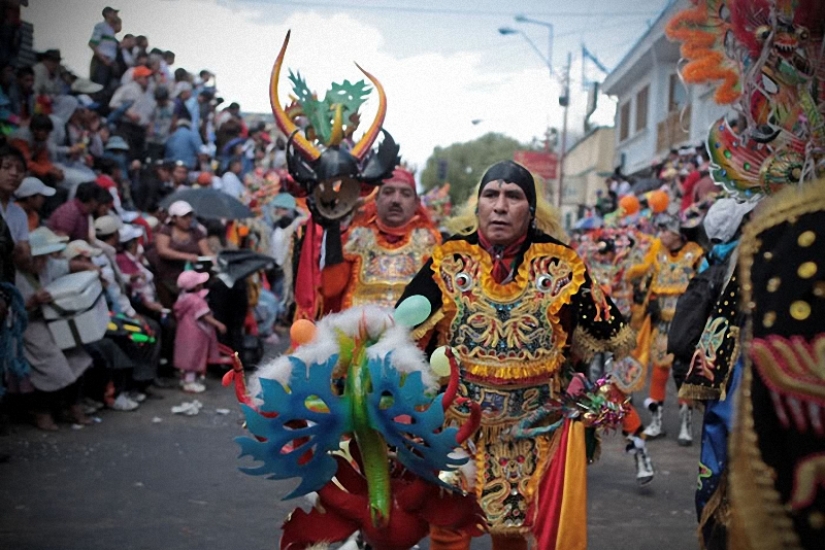 35.
35.
 36. Many dancers put under the chin a special sponge to soften the blow of the mask.
36. Many dancers put under the chin a special sponge to soften the blow of the mask.
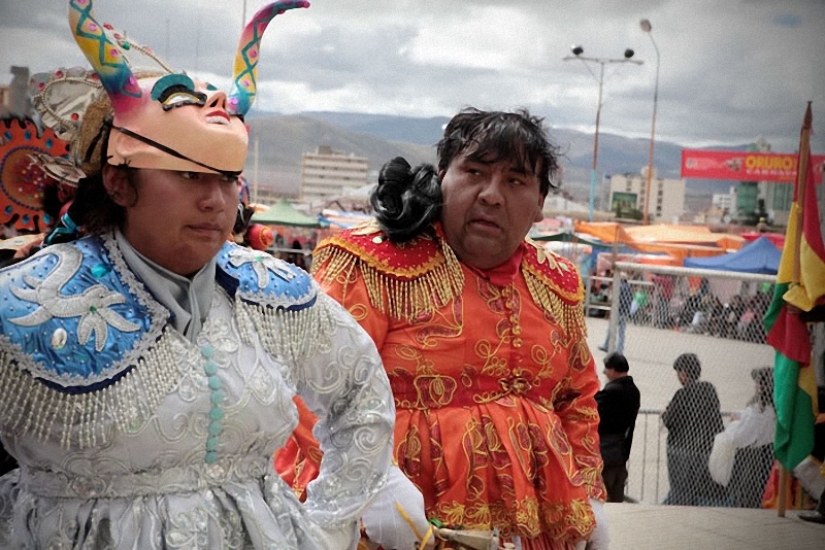 37.
37.
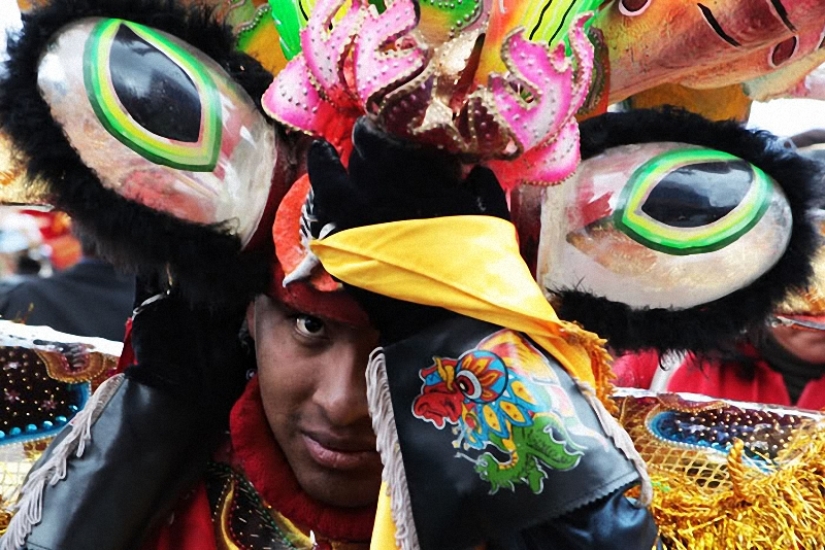 38.
38.
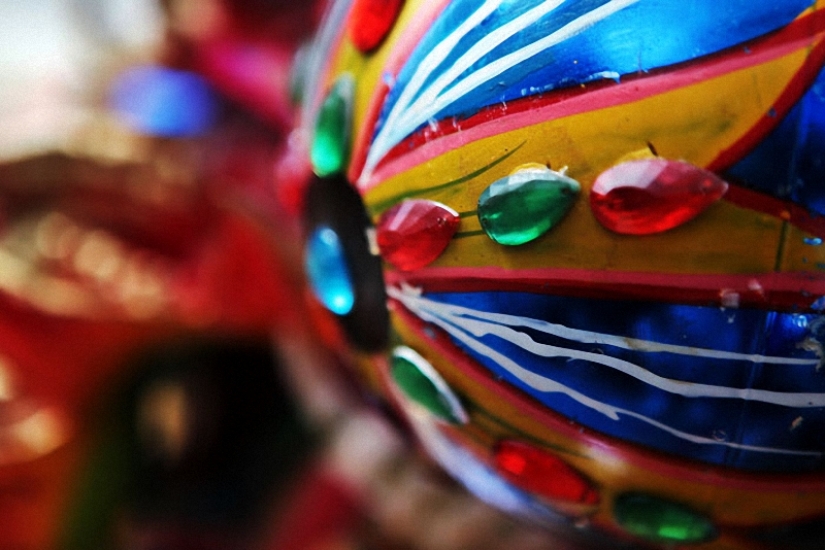 39. Special attention in the design of the mask is given to an eyeball of the devil.
39. Special attention in the design of the mask is given to an eyeball of the devil.
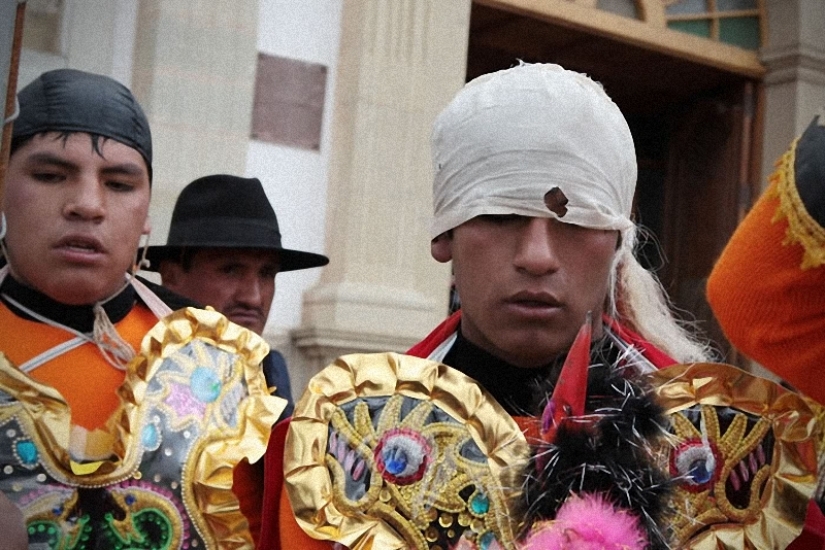 40. Some dancers have the forehead so hard that no fabric does not protect against the rhythmic beats of the mask.
40. Some dancers have the forehead so hard that no fabric does not protect against the rhythmic beats of the mask.
 41. Tired, poor thing.
41. Tired, poor thing.
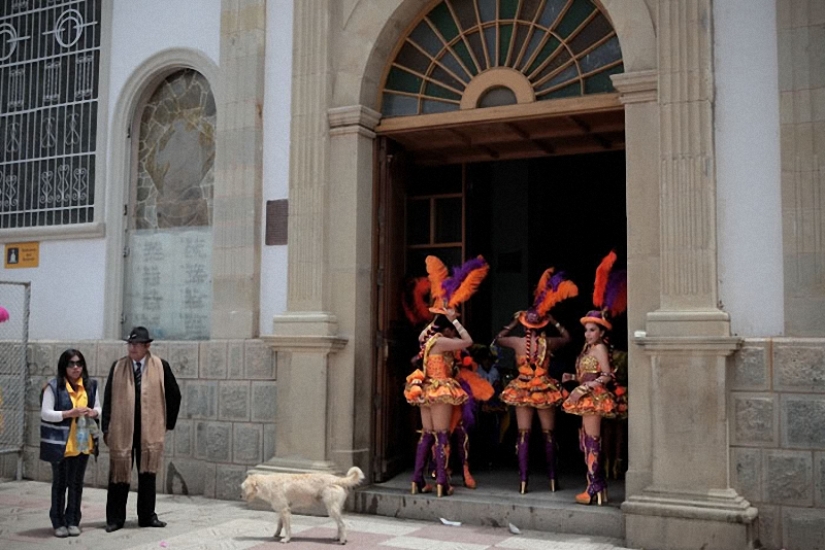 42. After a 5-kilometer route on the main streets of Oruro are all evil goes to the Church of Maria de Socavon.
42. After a 5-kilometer route on the main streets of Oruro are all evil goes to the Church of Maria de Socavon.
 43. In the Church, the priest absolves the participants of the carnival.
43. In the Church, the priest absolves the participants of the carnival.
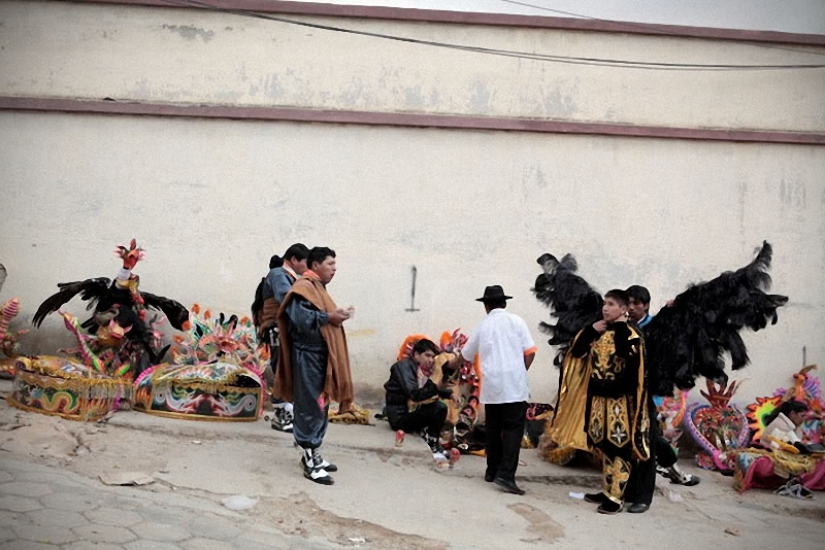 44. After the prayer, and you can finally relax, drink, eat.
44. After the prayer, and you can finally relax, drink, eat.
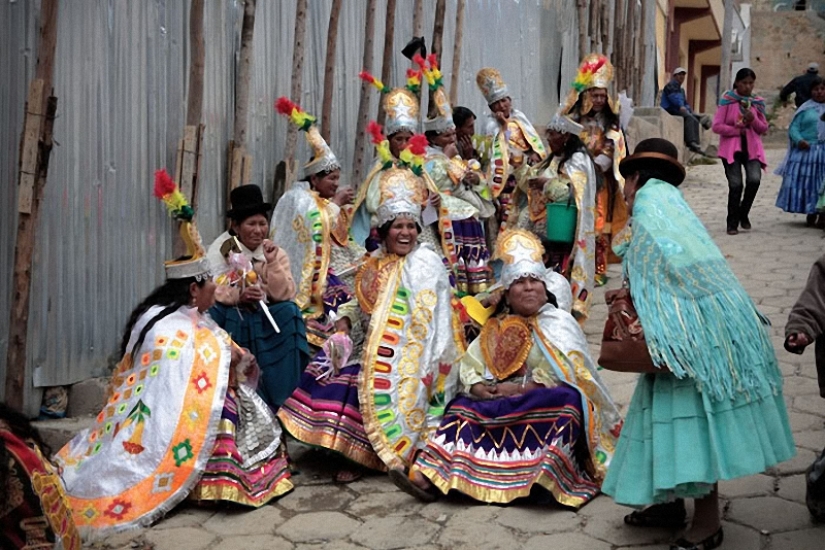 45. The tipsy wife of the Inca emperors.
45. The tipsy wife of the Inca emperors.
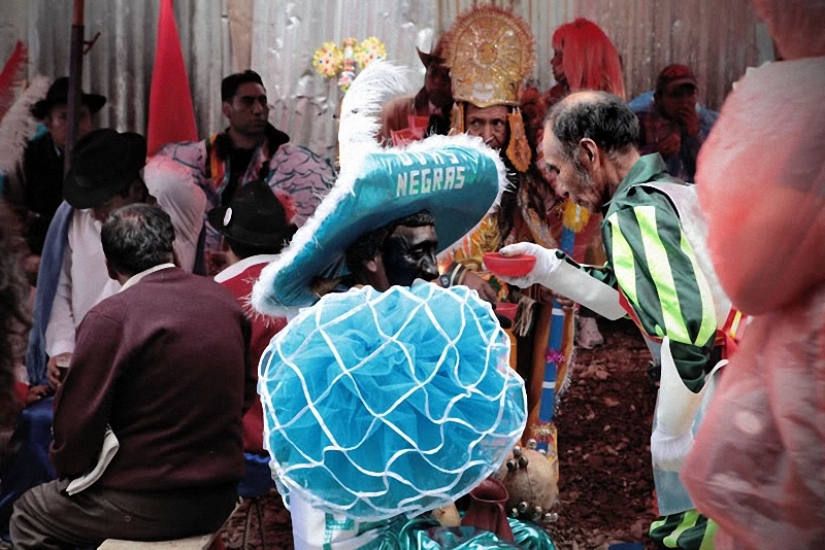 46. In deep saucers of red drink chicha — alcoholic beverage from corn. Cheech usually drink buckets grouped by 5-6 people and conveying the filled ladle in a circle from hand to hand. Drank — ate — handed.
46. In deep saucers of red drink chicha — alcoholic beverage from corn. Cheech usually drink buckets grouped by 5-6 people and conveying the filled ladle in a circle from hand to hand. Drank — ate — handed.
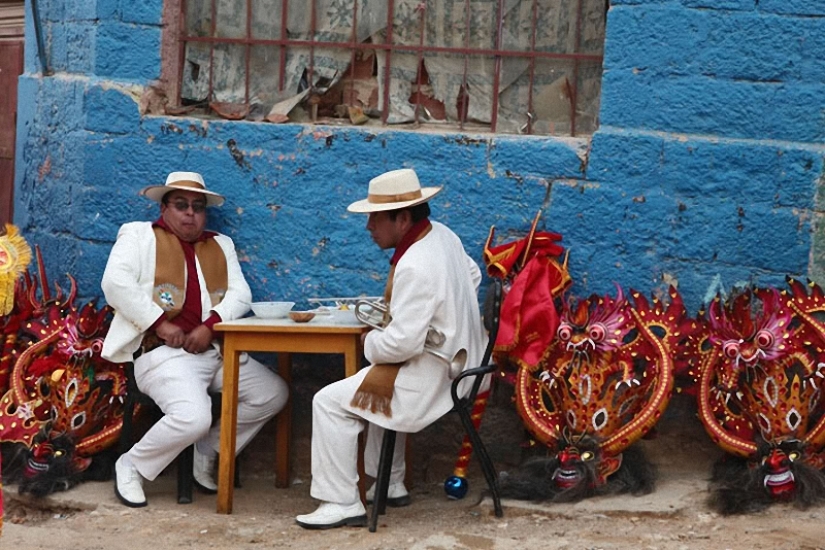 47.
47.
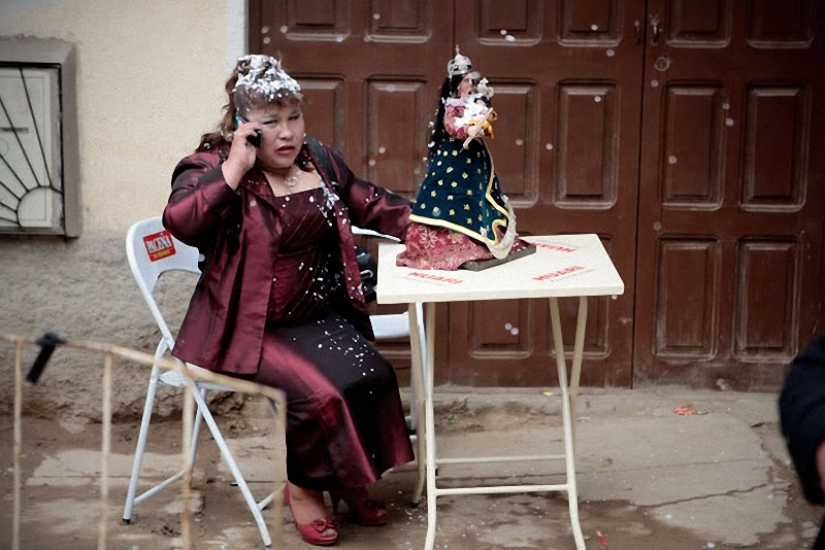 48. The virgin Mary on the connection (via proxy, of course).
48. The virgin Mary on the connection (via proxy, of course).
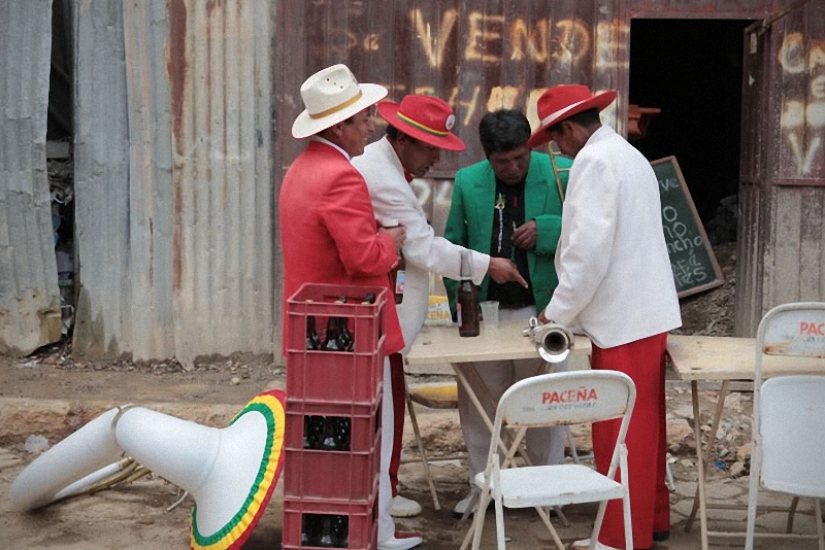 49. Musicians from different orchestras with pleasure a beer talking to each other.
49. Musicians from different orchestras with pleasure a beer talking to each other.
 50. After the speech, the carnival participants go home to change clothes and with new forces to continue the fun.
50. After the speech, the carnival participants go home to change clothes and with new forces to continue the fun.
 51. If beer is bought in the bottle, then it should be consumed on principle "and immediately drank it" because the sellers demanding the return of empties right there on the spot. Then how tin can you can safely take a leisurely stroll to quench their thirst. On the collection of cans during the carnival people cobble together a fortune.
51. If beer is bought in the bottle, then it should be consumed on principle "and immediately drank it" because the sellers demanding the return of empties right there on the spot. Then how tin can you can safely take a leisurely stroll to quench their thirst. On the collection of cans during the carnival people cobble together a fortune.
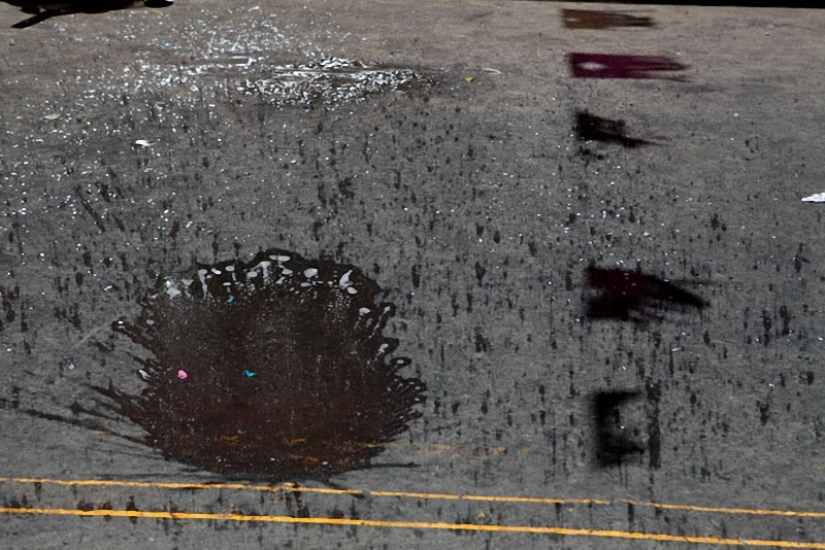 52. Blot water from Kapitoshka destined my back.
52. Blot water from Kapitoshka destined my back.
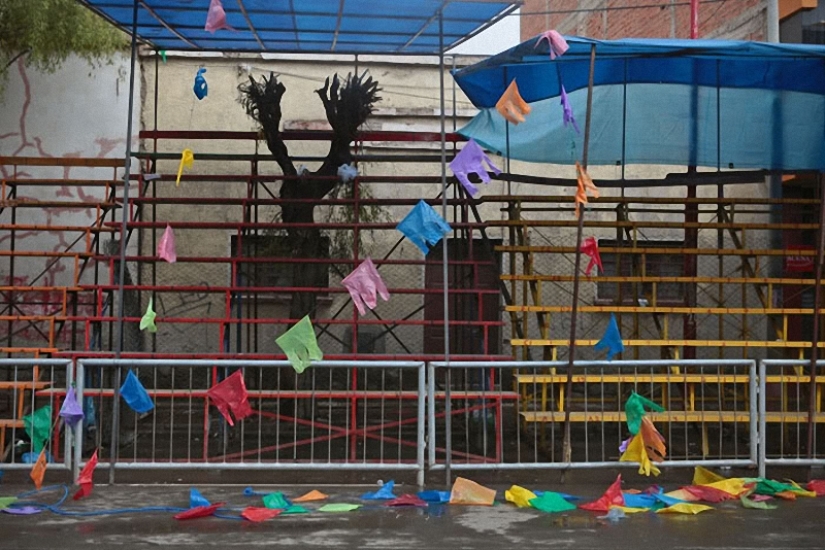 53. Dull morning after the carnival of madness.
53. Dull morning after the carnival of madness.
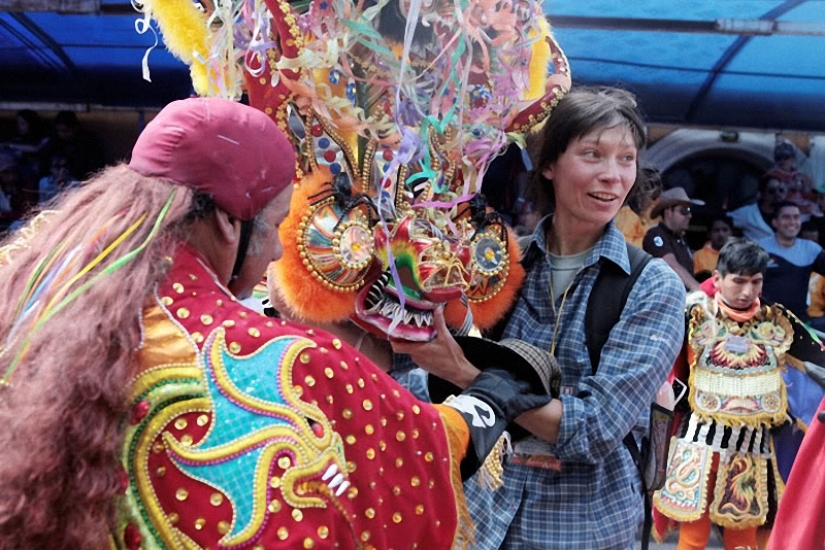 54. Well, I do :).
54. Well, I do :).
Keywords: Bolivia | The devil | Snakes | Indians | Carnival | Costumes | Crocodiles | Frogs | Ants | Trip | Ritual | Dance | Hill | Church | UNESCO
Post News ArticleRecent articles

Contradictory qualities can coexist in one person. A brilliant doctor can be a ruthless killer, and a talented musician can be a ...

With cats, everything gets better. Even if you add a cat to an ad for a product that doesn't even apply to cats, this ad will ...
Related articles

May 4-International Day of Firefighters and Rescuers remember their dead colleagues who risked their lives to save other people. ...

At an altitude of 4,000 meters above sea level, the city of El Alto is located in the mountains of Bolivia. Mostly ochre-red, it is ...

Cases of the introduction of otherworldly beings into a person were known for a long time, even in the pre-Christian era. At the ...

Microgreens, or as it is now fashionable to call it, microgreens are a fashionable product in our time. It is also important that ...